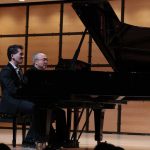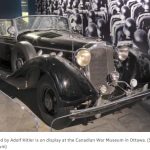这组照片为贝文-亚历山大(Bevin Alexander)的私人收藏,大部分拍摄于朝鲜战争期间。在1951-52年间,他指挥美军第五战史分遣队。他也是《朝鲜:我们第一次战败》(Korea : The First War We Lost)一书的作者。
Historical Detachments Photos
These pictures are from the personal collection of Bevin Alexander, who commanded the 5th Historical Detachment in the Korean War 1951-52.
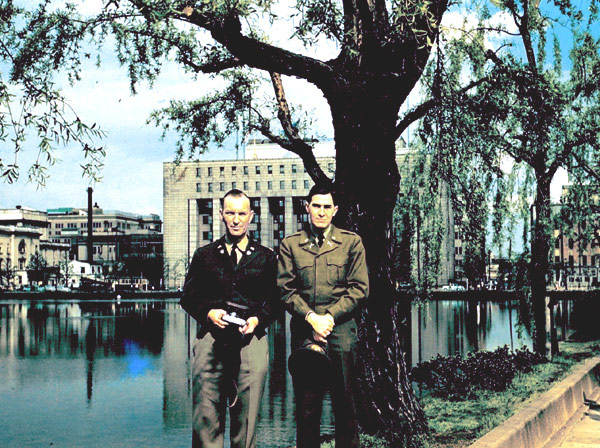
1. Historical Detachment commanders Captain Pierce W. Briscoe and Lieutenant Bevin Alexander beside the moat surrounding the Emperor’s palace in Tokyo in late May 1951. In the background is the Dai Ichi building, headquarters of the Far East Command.

2. Refugees on a street in Pusan, South Korea, in early June 1951. Millions of South Koreans were displaced from their homes and fled southward into areas not occupied by the North Koreans.

3. Another group of refugees in Pusan in early June 1951.

4. Historical Detachment commanders (from left) Pierce W. Briscoe, William J. Fox, and Bevin Alexander, with driver Private Donald L. Ruby and clerk Corporal Harry L. Knapp at Eighth Army Rear in Taegu as they are about to leave for the front in early June 1951.

5. Most Koreans were peasant farmers who lived in villages such as this, and went out every day to work the fields nearby. The villages were built wholly of local materials and seemed to grow naturally out of the earth. In a country of astonishing natural beauty, they were often the most lovely sights of all. Villages were usually only a mile or so apart. Like unpolished jewels, they studded the landscape of green and manicured small fields. It was a rare person who was not moved by their homely beauty and by the surpassing serenity of the Korean landscape. This village in central Korea south of Wonju was undamaged, but many villages were destroyed in the war. June 1951.
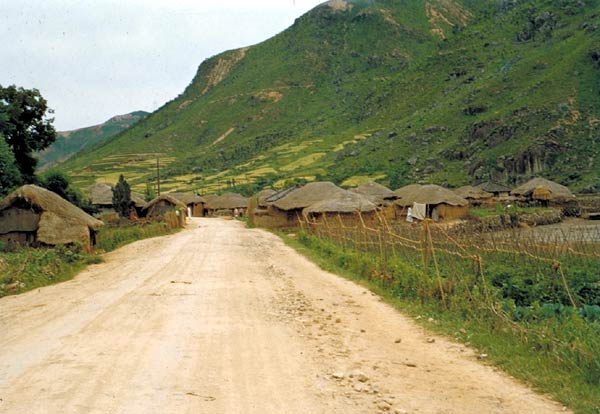
6. Entrance on a narrow dirt road to a typical village in central Korea south of Hongchon in June 1951. Only one small stretch of road in Korea—from Seoul to Inchon—was paved. All other roads were of dirt and gravel, about eighteen feet wide, and, in the countryside, lined with Lombardy poplars.
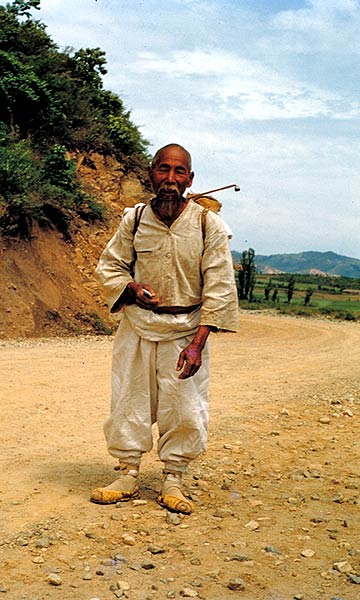
7. A Korean “papa-san” on a road in central Korea June 1951. His was the typical male peasant attire.

8. Historical Detachment commanders John Mewha (left) and Bevin Alexander at Tenth Corps headquarters in the Taebaek Mountains of eastern Korea June 1951.
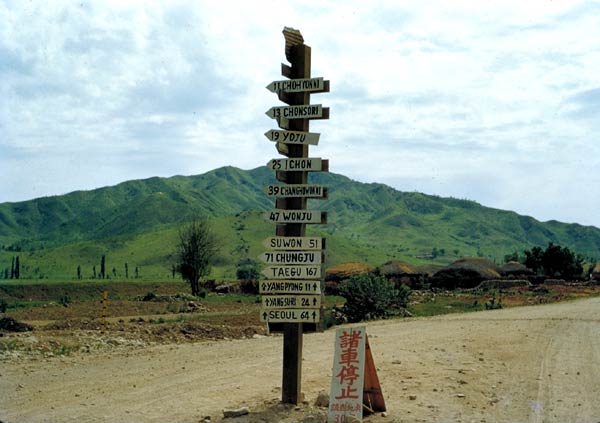
9. Signs at a crossroads in central Korea showing distances (in miles) to Korean localities summer 1951.
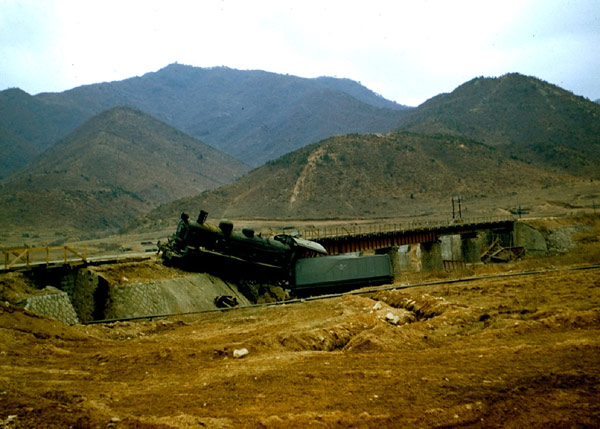
10. A locomotive wrecked in the fighting in central Korea and abandoned. Summer 1951.
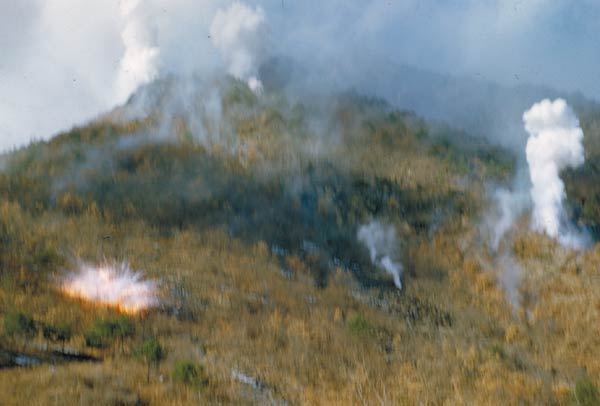
11. American 81mm mortar shells landing on a hillside in the Tenth Corps sector of eastern Korea July 1951.
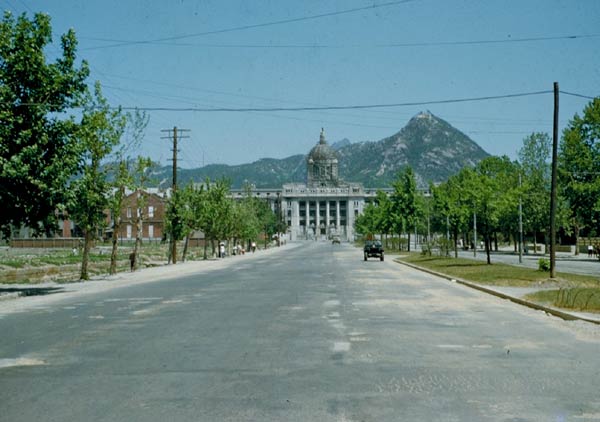
12. The National Capitol of Korea at the end of the avenue in Seoul in early October 1951. The area in the foreground was downtown Seoul before the war (and is so once again), but the fighting, especially in September 1950, destroyed virtually all of it. Seoul in autumn 1951 was almost a ghost city, most of the people having fled southward.

13. The 38th parallel near Uijongbu north of Seoul in the First Corps sector November 1951.
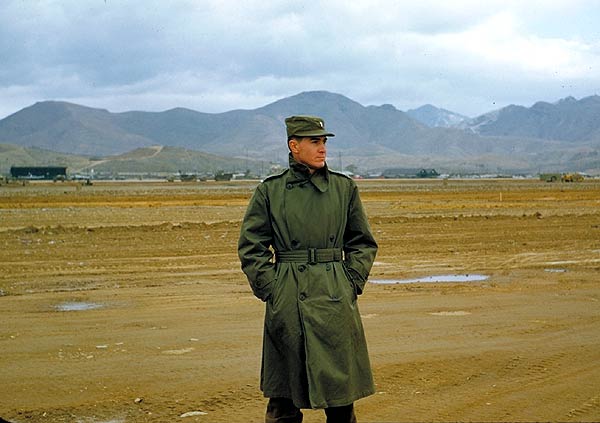
14. Lieutenant Bevin Alexander at K2 airport outside Taegu in November 1951. K2 was the “O’Hare” or “ Atlanta” hub in Korea for flights to and from the front and to and from Japan. Courier aircraft, mostly two-engine C-47s, touched down daily at all of the corps airstrips and some of the division strips along the front, and flew back to K2. Medical evacuation aircraft also touched down at the airstrips at the front to pick up wounded soldiers to fly them back to a large general hospital at Taegu, or for more seriously wounded straight back to hospitals in Japan. Daily four-engine C-54 courier flights also connected Korea with Japan, at first flying into Haneda at Tokyo, and later into Tachikawa, outside Tokyo.

15. Historical Detachment commanders William J. Fox and Bevin Alexander (foreground) outside Eighth Army Forward in Seoul in January 1952.
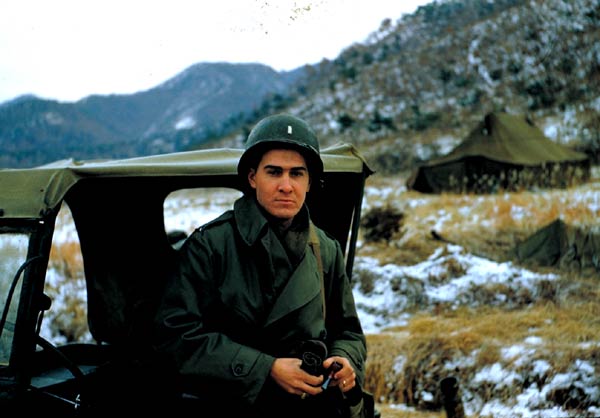
16. Lieutenant Bevin Alexander at the 3rd Infantry Division front west of Chorwon in February 1952.
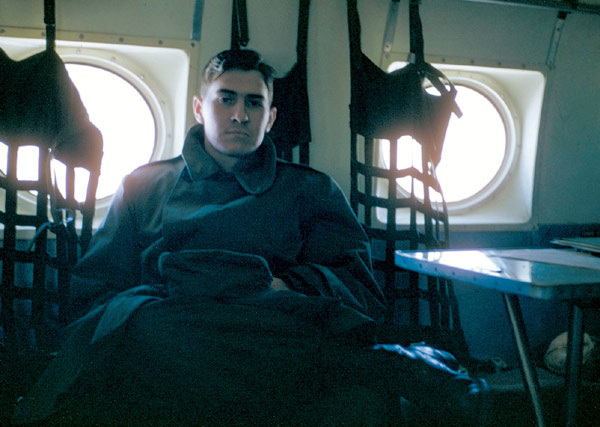
17. Lieutenant Bevin Alexander on a C-54 courier flight back to Korea after a short temporary assignment in Japan late winter 1952.

18. Sergeant Gene Smykowski, clerk of the 5th Historical Detachment, at a forward artillery fire-direction center in First (or I) Corps on the western front April 1952.

19. Lieutenant Bevin Alexander beside an 8-inch howitzer on the front in First (or I) Corps western front April 1952.
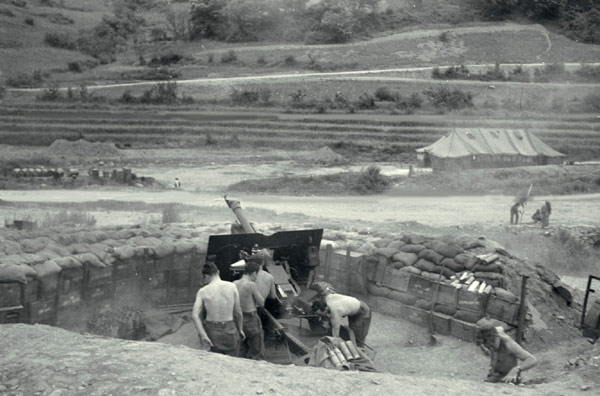
20. A 25-pounder gun-howitzer of the 16th New Zealand Artillery Regiment in a fire mission on the First (or I) Corps western front April 1952. The New Zealand outfit was part of the Commonwealth Division of British forces that served on the western front.
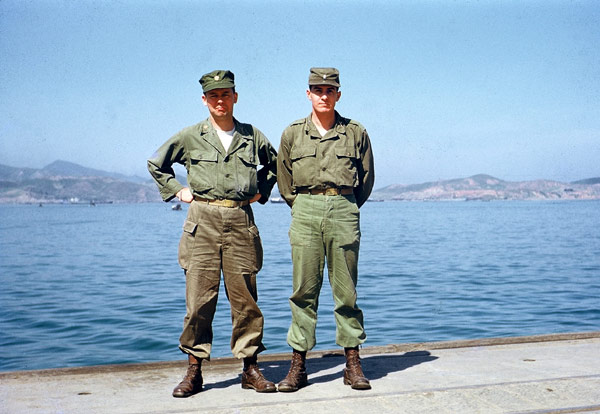
21. Historical Detachment commanders William J. Fox and Bevin Alexander at the harbor at Pusan in May 1952. Major Fox was going to do a study on the prisoner-of-war uprising that had just occurred on Koje-do island just off the coast, and Lieutenant Alexander was getting data on Soviet weapons used by the Communist forces in Korea. Some of these weapons were stored at Masan, a few miles west of Pusan.
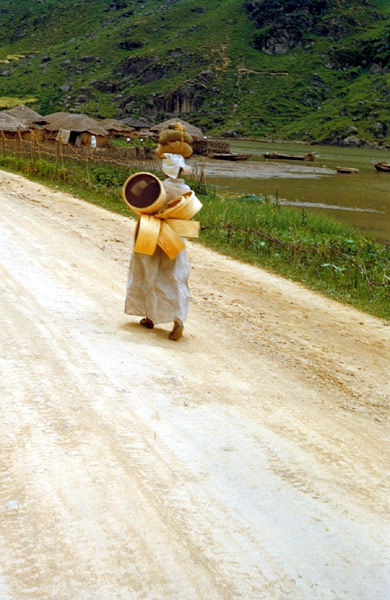
22. A Korean woman with a typical heavy load on a road near Masan in May 1952.
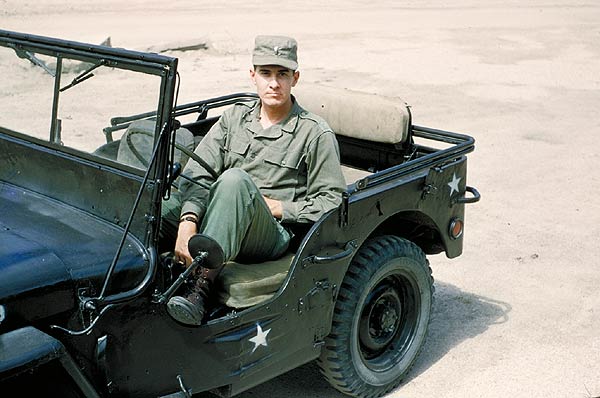
23. Historical Detachment commander Bevin Alexander in his jeep in Seoul in June 1952.

24. Lieutenant Bevin Alexander on the troopship in Sasebo harbor, Kyushu island, Japan, as he was departing for San Francisco and home in August 1952.
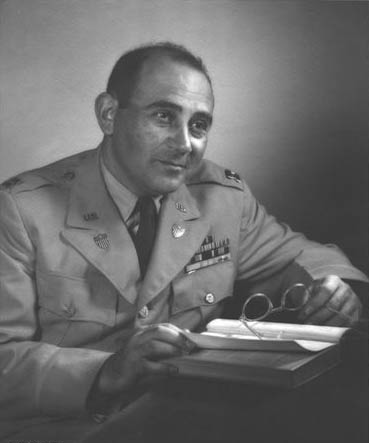
25. Captain Martin Blumenson, shortly after he returned home in summer 1952 after serving sixteen months as commander of a Historical Detachment in Korea. Blumenson became a historian in the Office of the Chief of Military History in Washington. He wrote a number of outstanding military history books, including The Duel for France, 1963, and The Patton Papers, 1972 and 1974. Blumenson died April 15, 2005, at the age of 85.


